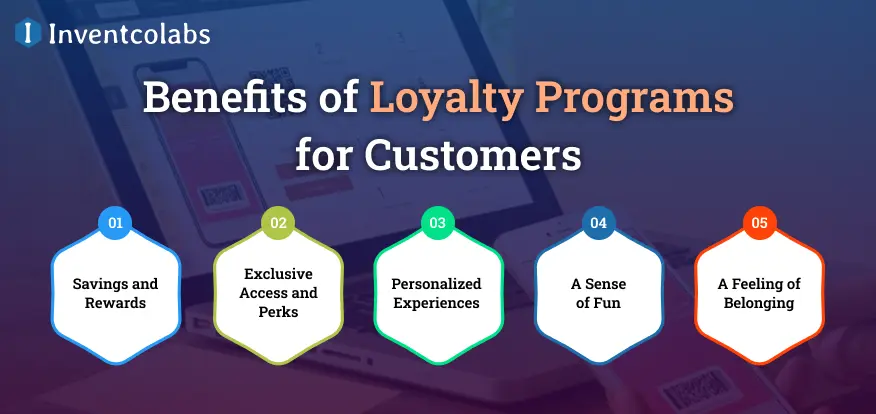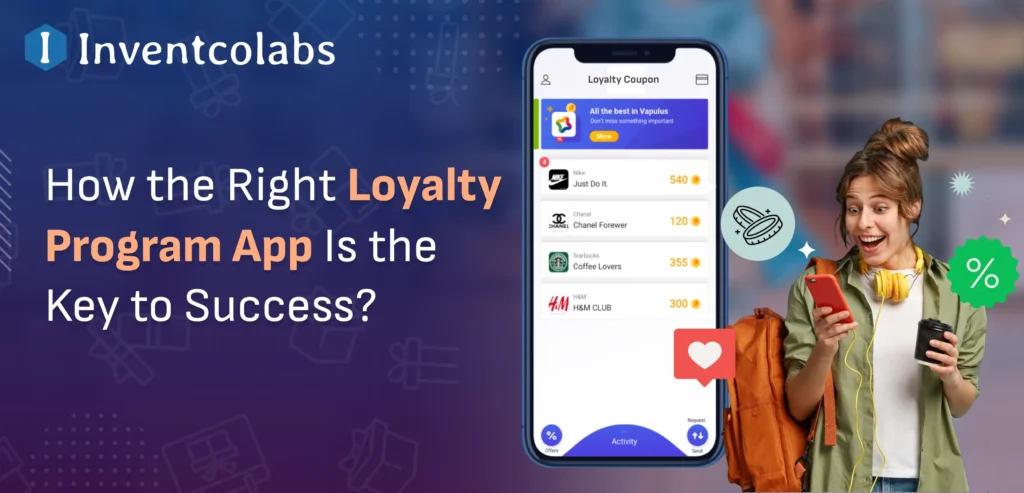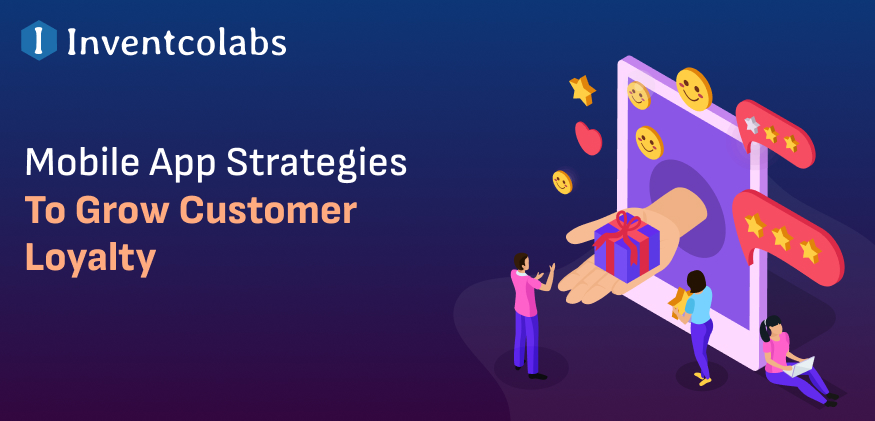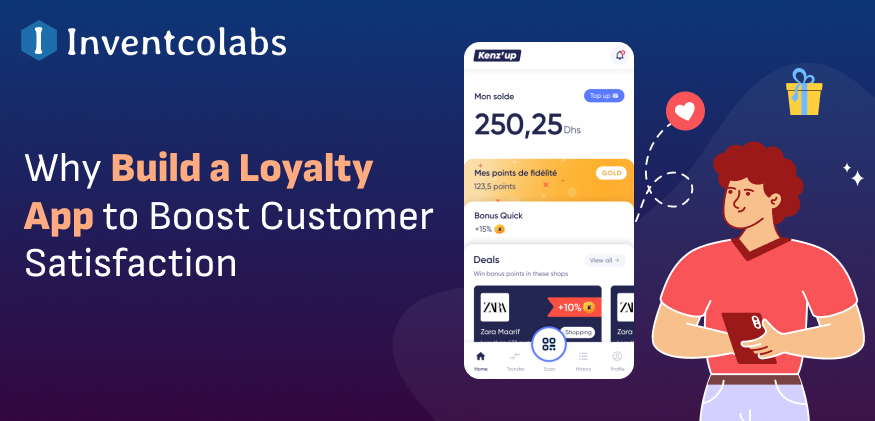Maintaining customers and build in how the Right Loyalty Program App Is the Key to Success loyalty is essential for any successful company in the current business environment. Technology has shifted the way businesses view client loyalty, and the best loyalty program is becoming a necessary element of this approach.
Over the past several years, businesses ranging from big retailers to small manufacturers must learn to adapt to changing customer habits driven by a generation that predominantly connects to the outside world using their phones. The generation glued to their phones has no tolerance for bad experiences, so sticking with old-fashioned mobile applications not optimized for loyalty programs can lead to criticism and churning of customers.
The issue is whether you have the skills to create a strategy for Loyalty App Development. Is there something you’re missing? In today’s post, we’ll look at the advantages dedicated loyalty apps could provide.
What Is a Loyalty Program?
Programs for loyalty run by businesses and retailers provide discounts, rewards, and other incentives to attract and keep customers. These programs aim to encourage customers to return to businesses and offer an incentive for loyalty to a brand or store (hence that name). In general, the more often a client visits the company, the more they spend, the greater the rewards
Benefits of Creating a Loyalty Program

For companies, the advantages of loyalty programs are numerous and well-established. Not only as a tool to retain customers—as huge as the benefits could be—but they also aid in acquisition. 75% of customers prefer switching brands to the benefit of a more effective loyalty program.
It’s easy for consumers to compare prices with just a few clicks. If they only consider the products you offer and not your brand and store, you’ll end up in a pricing battle where larger stores like Amazon have the upper hand. Loyalty programs can be beneficial as they help prevent your business from competing on price alone. Hire Dedicated Developers that allows you to set your company and its products apart by providing a better (and personalized) user experience.
Let’s discuss the issue.
Studies have shown that it is extremely emotional when a consumer purchases a product. Are you selling items that are purchased out of need rather than desire? If yes, you must appeal to their emotional needs.
Rewards for customer loyalty can be a very effective way to entice and delight customers shoppers who purchase from you by rewarding them for something they previously should have noticed.
When you give your customers a gift, you appeal to their emotions. This way, you’ll begin to create bonds. Customers perceive you as more than a collection of goods when that bond is established. It also increases your customers’ loyalty, encouraging them to make purchases again, which boosts the profits you earn.
>Improve Retention and Reduce Churn
It’s hard to overstate the importance of retaining customers. Not only does it lead to greater profits because loyal customers pay an average of 67% more than new ones, but it’s also five times more affordable to keep existing customers rather than acquire new ones.
If your company has a high churn percentage, which is the percentage of customers who quit doing business with you during a specific time, you’re not getting affordable, high-quality, low-cost custom.
Your loyalty programs can significantly improve customer retention and reduce your churn percentage, turning once-buyers into regular customers. Companies like Starbucks have made this a reality through the Starbucks Rewards Program, where customers receive points (‘stars’) for each purchase. These points can then be exchanged for free drinks or food products. This helps to encourage repeat purchases, increase retention, and decrease the rate of churn.
>The CLV will Increase (customer time value)
The value of a customer’s lifetime (CLV) can be defined as the net profit derived from the relationship you have with your customer. It measures the value of a client to you today and what this ongoing relationship could become worth to you in the near future.
Loyalty programs increase customer loyalty by increasing the average value of orders and the purchase frequency of your customers. Customers will spend more, more often, and stay longer in your company.
>Make Customers Brand Advocates
When you reward customers who recommend your company to others, the loyalty scheme can become a potent acquisition channel.
Loyalty programs often offer incentives for referrals that convert customers into brand ambassadors. Dropbox is a good example. Its referral program increased exponentially, offering additional storage space to both the referrer and the customer who was referred.
Specific loyalty programs offer points for purchases and other activities that indirectly benefit the business. For instance, TOMS Shoes rewards customers for sharing their content on social media and engagement, resulting in a synergistic connection where customers earn points and the business benefits from positive word-of-mouth advertising.
>Increase Purchase Frequency
The Loyalty App Development Solutions encourage a higher buying frequency, especially for items with short sales cycles.
The best example of this is the coffee shop: customers will be much more likely to make frequent purchases of coffee at takeaway in the knowledge that they’re earning loyalty rewards. For instance, McDonald’s McCafe Rewards program provides free drinks after a purchase of five drinks, encouraging customers to come back more often to redeem the reward.
>Improve Average Order Value
Along with increasing the number of purchases made, loyalty programs can boost the value of every purchase.
This is referred to as the Average order value (AOV). Companies can boost their customers’ AOV by rewarding them according to their total spending.
For example, Nordstrom’s Nordy Club program offers members additional points per dollar spent during “bonus points events,” encouraging customers to spend more on each transaction.
>Gather More Customer Data
Loyalty programs are an excellent tool for collecting customer information. Every interaction, from purchase history to reward-redeeming patterns, provides insight into customers’ behavior.
You could also offer rewards to your customers who share certain information with you, like birthday rewards, where you give your clients a gift to celebrate their birthday in return for sharing it with you.
This information helps brands make better-informed decision-making about their marketing and strategic plans.
>Even out Seasonality
Most companies experience seasonal fluctuations in sales, and it’s difficult to increase revenues during the slower months. Rewards programs can help reduce these fluctuations by offering rewards or promotions during non-peak timeframes.
For example, travel businesses such as hotels or airlines could offer double points to customers booking in low seasons to encourage travelers during these periods.
>Increase your Communication and Build your Brand
Ultimately, loyalty programs are a great way to help your brand’s reputation and enhance customer communication. Regular updates on rewards, special offers, and special events are a way to interact with customers and build a stronger brand-customer relationship.
Explore More: Why Build a Loyalty App to Boost Customer Satisfaction in 2024?
Benefits of Loyalty Programs for Customers

Programs to reward loyalty are beneficial for your business, but they’re also helpful for your customers.
The more you know about the advantages of Rewards App Development, the more you can customize your loyalty program to meet their requirements.
>Savings and Rewards
The primary benefit for customers is the ability to save money. Brands can help customers save money by offering discounts, redemption points, and rewards for loyalty programs. Numerous brands provide advantages like free shipping or returns to their loyal customers to ensure they can deliver additional value.
>Exclusive Access and Perks
However, loyalty programs aren’t only about discounts. It’s generally best for your company when they’re not. They can also provide unique perks that can enhance customers’ experience. This could include early access to products or sales, exclusive members-only events, or preferential customer service.
For instance, members of the Nike loyalty programme, Nike Membership, get exclusive access to certain products prior to their release to the general public.
>Personalized Experiences
Through loyalty programs, businesses collect data to provide personalized suggestions and promotions tailored to each customer’s preferences.
Amazon Prime members, for example, are given customized recommendations based on their purchasing and browsing history, which can assist them in finding new products that match their preferences.
>A Sense of Fun
Most loyalty programs incorporate aspects of gamification—earning points, attaining new levels of membership, or completing tasks—which increase the fun. For instance, Starbucks Rewards uses a leveling system that lets members “level up” to achieve Gold status. Incorporating gaming into your loyalty program creates a genuine, enjoyable experience for your clients.
>A Feeling of Belonging
When done right, loyalty programs can create an online community of customers who are committed to your ideals. For instance, Patagonia’s Common Threads Initiative gives customers an experience of belonging to an enclave of like-minded people committed to reducing environmental impact.
Read More: Why the Right Loyalty Program App Is the Key to Success in 2025
How to Create a Customer Loyalty Program

Here are nine suggestions for a Custom Loyalty App Development program for customers.
>Be Aware of your Audience
A key aspect of implementing the most successful program for customer loyalty is ensuring that the rewards are reflected in what customers would like from a rewards program. This means that organizations must put forth the effort to know their loyal patrons and the factors they would like to keep them returning repeatedly. Research is the key to success. Utilize surveys or customer service information and customer surveys to collect information about who your client is. You must have a basis for knowing precisely who the client is and what they’ll react to.
>Give Customers Something to Strive for
The benefit of tier-based programs is that they offer customers something to work towards. Sephora’s Beauty Insider loyalty program is an excellent illustration. It has three levels, and the higher an individual’s score, the greater the benefits they receive. Tier-based programs are designed to engage customers while giving them a sense of being unique. It’s a feeling of honor to know you’ve reached the top of the ladder.
>Give Value to your Customer
When your loyalty programs are more focused on helping your business than your customers, they can tell the difference. It’s essential that your customers feel that they are receiving something back. For instance, you could give customers bonus points to ensure they receive more benefits as they spend.
>Add a Personal Touch
With the number of brands that offer loyalty programs, incorporating personal touches is an option that stands out. And customers increasingly demand it. A clothing store can look at how customers behave. The company could use that information to convince customers to shop in various categories relevant to their interests and requirements. If a particular customer was always a dresser shopper, you could offer discount coupons on accessories to convince them to purchase from a different segment of your shop.
>Offer an Incentive
If you create a brand-unique loyalty program, providing an incentive to your customers will encourage them to avail of the offers. Certain brands offer a welcome discount to enable customers to join. Panera offers MyPanera members loyal to the brand their initial month’s membership at no cost and a complimentary sweet treat once they sign up.
>Make Use of Technology for an Effortless Experience
If your loyalty program doesn’t provide an effortless experience, it’s not worthwhile for your customers. Smartly using technology can offer the seamless experience that customers want. Brands such as Cost Plus World Market are including an SMS element in their loyalty program so that customers can receive gifts directly to their mobiles.
SMS signifies that rewards are placed right in your customers’ pockets. In other channels, such as email, users must sign up and scroll around to see what offers are available. However, with SMS, you can text the link directly to their mobile. Reservations.com’s R-Club connects members with a travel advisor who they can contact, text, or send an email with information about their trip as they join their loyalty plan.
>Prepare to be Agile
In the aftermath of the pandemic, several loyalty teams needed to adapt and swiftly adjust their loyalty programs as a reminder that it is important to maintain agility. As customers’ expectations and the market shift, the loyalty program you run must follow suit. While Sephora’s loyalty program depended heavily on store-to-store purchases in the past, customers are now given the option of redeeming their gifts through kerbside pickup.
>Become Data-Centric
Data is essential to measure the effectiveness of your loyalty program. Consider incremental sales. This is a measure of how many sales resulted from coupons that went out and compared it to the behavior of what it would have been had there not been that coupon. Another crucial metric is customer lifetime value. A rewards team must ask themselves: “Did the customer return after using a coupon?” Also, was the coupon making customers more loyal, or were customers who used it only for the first time and never returned?
>Add an Emotional Element
Adding an emotional element to your loyalty program is crucial to keeping customers loyal. Prior to the outbreak, certain brands held events linked to weekend sales. Sephora offered customers free makeup. In this secluded world, business owners must come up with new methods to create a connection with their customers, giving them the feeling of warmth and comfort every time they see their name. This includes more than coupons and discounts.
In other words, ensure your marketing program is engaging and interesting so customers will return and leave with positive thoughts, emotions, and memories of your company. Beyond the points or free foods, the reward program allows customers to alter the menu items they prefer and save their favorite items. Members are also the first to learn about the latest menu offerings.
Explore More: Mobile App Strategies To Grow Customer Loyalty In 2024
How to Measure the Success of a Loyalty Program?
To measure the success of loyalty programs is by monitoring the performance of key indicators of performance (KPIs) like:
- Redemption Rate: It’s the amount of rewards customers redeem. A high percentage of rewards shows that the customer believes they are worth the reward and the effort to seek them out.
- Net Promoter Score (NPS): It is a metric that measures the likelihood that customers will suggest the brand’s name to their satisfaction level and loyalty. A higher NPS signifies that customers are satisfied with the product and more inclined to recommend your company to their friends.
- Ratio of Customer Churn: The amount when customers cease using the services provided by the company. A successful loyalty program must keep customers engaged and happy, reducing turnover.
- Increase in Sales: This is the increase in revenue that loyalty programs are acknowledged to have generated. Determine the additional income that participants of loyalty programs earn over non-members.
- Customer acquisition Cost (CAC): It is bringing in new clients through the loyalty program. A lower cost for customer acquisition (CAC) indicates that the program has successfully brought new clients without needing substantial marketing budgets.
- Engagement Metrics: Track how often users interact with the application, how many points they accumulate, how often they use the program, and whether they participate in special offers or events.
Conclusion
Programs to reward customers and help maintain brand loyalty. While loyalty programs benefit clients, they can also help businesses by generating repeat business, which helps retain market share and increase profits and sales.
The software for loyalty programs was designed to assist you in growing. When you decide to use our platform and the knowledge of loyalty, we’ll help you stay in touch with your customers and win new ones. In turn, you’ll gain the value of the customers who purchase from you over time.
Read More: How To Create A Loyalty and Reward App?





